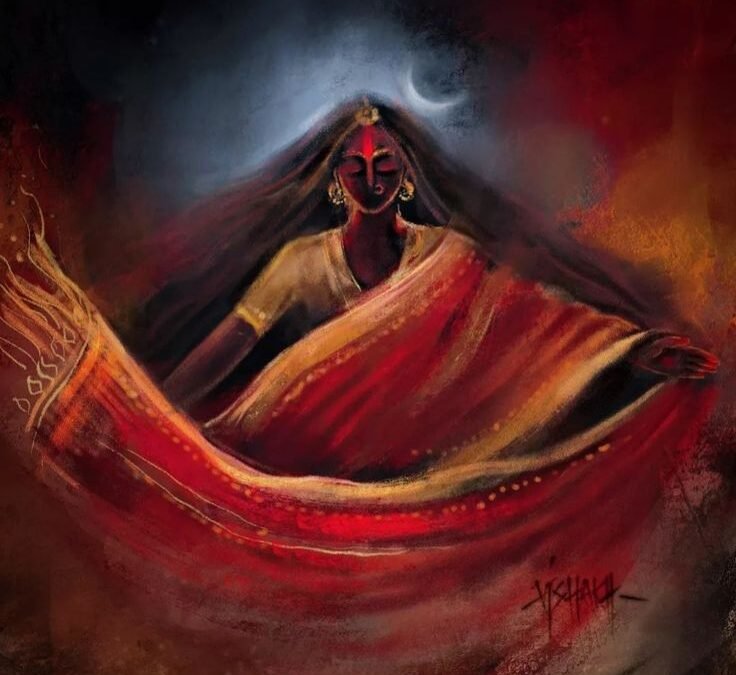5 VEILS MADE OF CONSCIOUSNESS
Although theses states or stations will be presented in a linear way, they can and do often times appear as non-linear, without necessarily any particular order. There is no linear chronological order.
First State or Station Or Veil – Thought
If you believe you are your thoughts, memories, emotions, associations sensations or perceptions, then you will try to change them into something better, higher, more spiritual or more socially acceptable and appropriate, etc.
The minute you get into trying to change your thoughts, memories, emotions etc., two things occur. First, There is an Identification of the thought or feeling as “I”, “me” or “mine” And Second, there will beA judgment; (this thought/emotion is good or bad)An evaluation; (This means something about me.)A significance; (Some thoughts or feelings are more significant or important then others.)
Next State or Station Or Veil – Space
The problem here is that the thought and the space are made of the same substance, moreover, the space both forms and informs the thought which means the thought and the space are the same. Since the thought and space are one and the same and are holographic, the space “creates” the thought back.
This is the answer to the question, Why the thoughts comes back after meditation? Or Why does the “Awakening” disappear?
If you nest in the space between two thoughts, it is the same as nesting in the thought. Secondly, Although the space is a subtle form of thought, and arguably a more pleasant state, it is still a state or station, and therefore is temporary, that is why the state or space disappears.
In short, the space is part of the illusion, ergo the space is a state or station or veil And needs to be discarded. As an aside, the veil of space conceals knowledge in a vibratory form.
“Knowledge is bondage”-Shiva Sutras
Next State or Station Or Veil – Mindfulness
I can observe MY thoughts memories emotions associations sensations perceptions etc. (The operative word being MY, (“as if” they belong to a me.) along with the spaces between the thoughts memories emotions associations, sensations or perceptions. (This often times is referred to as a mindfulness, (state). Although arguably this is a more pleasant and better state-station then believing in my thoughts or that I am my thoughts, this is not a state to Nest in.
In the Buddhist tradition they are called Skandas which can be translated as a heap or a combination. “I” the I Am, the psychological subject or what you call yourself is a combination of all these states and stations. Everything we think of as “I” is a function and interaction of the Skandhas. The fourth Skandha contains 54 mental formations one of these is called mindfulness, and although it is pleasant it is a Skandha and therefore it is something to be discarded not to be Nested in because it is part of the “I” or psychological subject and therefore re-enforces the sense of “I”.)
Next State or Station Or Veil – I Am
There is just presence there is really no awareness or knowingness of thoughts memories emotions associations perceptions this can be referred to as I Am.
“In your absence, is your presence”-Jean Klein
Next State or Station The – Veil of Consciousness
When you inquire deeply into I Am you notice that I am conscious of the I am, now in the state I am conscious OF (the operative word being OF) the I Am.
“Anything you can be aware of you cannot be, therefore discard it.”-Nisargadatta Maharaj
Soon you realize that I Am conscious of and the of begins to fall away and then there is just consciousness. As consciousness there is no awareness perception or knowingness of anything there is only consciousness. This is referred to in Buddhism as The Fifth Skandha.
Consciousness is the vehicle for knowingness. Without knowingness I would not even know that I Am and Consciousness would not even know that it is consciousness. Consciousness is the vehicle for the I Am. It is important to understand that consciousness depends on the other Skandhas i.e. (perceptions, the senses, sensations, mental formations etc.) and does not exist independently from them. It is the action and interaction of all five skandhas that create the illusion of a self With consciousness as its vehicle. It should be noted that in the Buddhist tradition consciousness is a Skandha and is therefore something to be discarded as not this not that.
“Anything you can know or know about you cannot be, therefore discard it.”-Nisargadatta Maharaj
It is also important to remember that Vijnana, (recognition) is not “special” or “above” the other skandhas. Recognition or realization of consciousness is a skandha it is not the “Absolute” It is the action and interaction of all five skandhas that create the illusion of a self.
“I am in every being, I am not in any being”-Lord Krishna
In the same way, I am the consciousness, and simultaneously I am not the consciousness.

